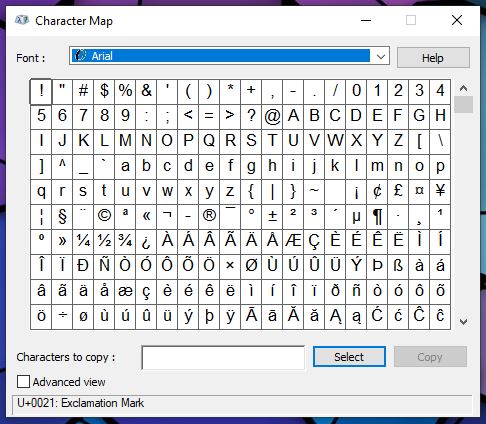Have you ever wanted to use various symbols that are so easy to draw but apparently impossible to replicate when typing on a computer? For instance, it’s a breeze to draw a heart symbol when writing a love letter to your significant other on paper, but it’s much more difficult to get the same image across if you’re relying on a Word document or just using a text box that doesn’t contain pre-rendered emojis.
Making the “degrees” symbol feels similarly difficult, even though lots of college students need to do it for their school work or official papers. But both the “degrees” symbol and others can actually be replicated right from your keyboard if you know the right steps.
All it requires is a sequence of key presses with a special number code. Let’s go over the exact steps required to make the “degrees” symbol and more in whatever text box or document you wish.

How This Works
At its core, creating special characters that can appear in any kind of text box requires inputting a special code into your keypad. This can only be initialized by both A) initializing Num Lock, which is a button on the right-hand of most keyboards and which allows for the three by three number pad to be used and B) inputting the correct numerical code. These codes aren’t well known by the general public, and there are too many of them to create an easy to understand keyboard interface for everyday use.
Therefore, the only way to tell a computer to project a special symbol, such as “degrees”, “hearts” or anything else is to speak the computer’s language. While this might sound a little irritating at first, it actually makes you feel technically capable once you get the hang of it.
The number of codes that can be accepted by a Windows PC computer is truly staggering, so don’t expect to memorize these codes altogether. You may memorize one or two codes for symbols that you use frequently but it always helps to have a shortcut of a list of the codes for easy per usual if you want to type in a new symbol on your next email or chat session.
Note that all of the above information only works for Windows PCs. These directions may be drastically different for other operating systems or types of computers since the base code underlying inputs from a keyboard is vastly different.
If you are using a Windows PC, these instructions will work with any kind of text box that accepts inputs from your keyboard. This includes emails, social media chat boxes, video games, or forum posts.

Step One: Cursor is Key
To start, click into whatever text field or box in which you wish to place your “degrees” symbol. Wherever the winking line directed by your cursor appears is where the symbol will show up once you’ve followed the correct instructions.
Step Two: Num Lock
This step is simple. Just the Num Lock key. As we mentioned above, it’s normally located above the number 7 on your number pad, which is generally on the right-hand side of your keyboard. If you hit this button, many keyboards incorporate a small light that should illuminate above the center of your board.
If your keyboard doesn’t have such a light, you can test out whether your number pad is functional by pressing any of the numbered keys on that pad. If the corresponding number shows up in the text box, the pad is initialized.
Step Three: Key Sequence
Next, hold down either of your “Alt” keys, of which there should be two on either side of your spacebar. The key you press doesn’t matter to the computer, so go with whichever is more comfortable.
Once your “alt” key is being constantly held down, press the following number keys on your number pad in rapid succession. It helps to do this with a single hand so you get them all hit without effort.
The numbers are: 0, 1, 7, 6.
While most people tried to do this as quickly as possible, you actually don’t need to be in any particular rush. So long as the “alt” key is held down by your finger your computer will be waiting for inputs from the number pad and consider what symbol you’re trying to input. You can take your time as you put those numbers into the keyboard, so be sure to get them right.
If you ever see this code read as characters, it’ll be depicted as “Alt+0176”.
Step Four: Repeating the Symbol
If done correctly, you should now have a new “degrees” symbol wherever you placed your cursor inside your target text box. This symbol can easily be repeated by inputting the exact same code just as you did before.
However, if you have trouble remembering the exact code you need to press, you can always simply copy and paste your existing symbol and use it elsewhere in your text document or chat message. The symbol you’ve input is exactly like any other digital character and can be copied and pasted using the same commands.
In case you don’t know what those commands are, they’re simple. Take your mouse cursor and click and drag it over the text you want to be copied, including your “degrees” symbol. Once highlighted, let go of your mouse button and press “Ctrl+C” together. This will copy the selected text to your computer’s memory.
Next, click wherever you want to place the copied stuff. Then press, “Ctrl+V”. This should result in a perfect replica of the chosen text wherever you like. This is a quick and easy way to make multiple symbols scattered throughout your document or text message without having to input the same number sequence over and over.
Step Five: The Character Map
You might be wondering what other cool symbols you can make using your number pad and the “Alt” key. To view those symbols and their accompanying sequence codes, you can access the Character Map on your computer if you are using a Windows PC.
Simply click the start menu, then go to “all programs”. Next up you’ll click “Accessories”, followed by “system tools”. At this menu you should see a button called “Character Map”. Clicking here will let you see various symbols that your computer can transcribe from an associated numerical code.

Those codes are the same no matter what kind of text box you want to place the symbols inside, so you can either write these codes down for symbols that you feel you’ll use frequently or you can simply remember to look for the Character Map whenever you want to find a new symbol.
Conclusion
As you can see, learning these codes opens up a whole new world of possibilities when it comes to your official paper writing or online discourse. You’ll be able to use the exact symbols you imagine when you compose a new letter or chat message, plus you’ll feel a little more tech-savvy at the same time. It’s a win-win. Have fun with your new tricks and thanks for reading!
Meet Ry, “TechGuru,” a 36-year-old technology enthusiast with a deep passion for tech innovations. With extensive experience, he specializes in gaming hardware and software, and has expertise in gadgets, custom PCs, and audio.
Besides writing about tech and reviewing new products, he enjoys traveling, hiking, and photography. Committed to keeping up with the latest industry trends, he aims to guide readers in making informed tech decisions.

